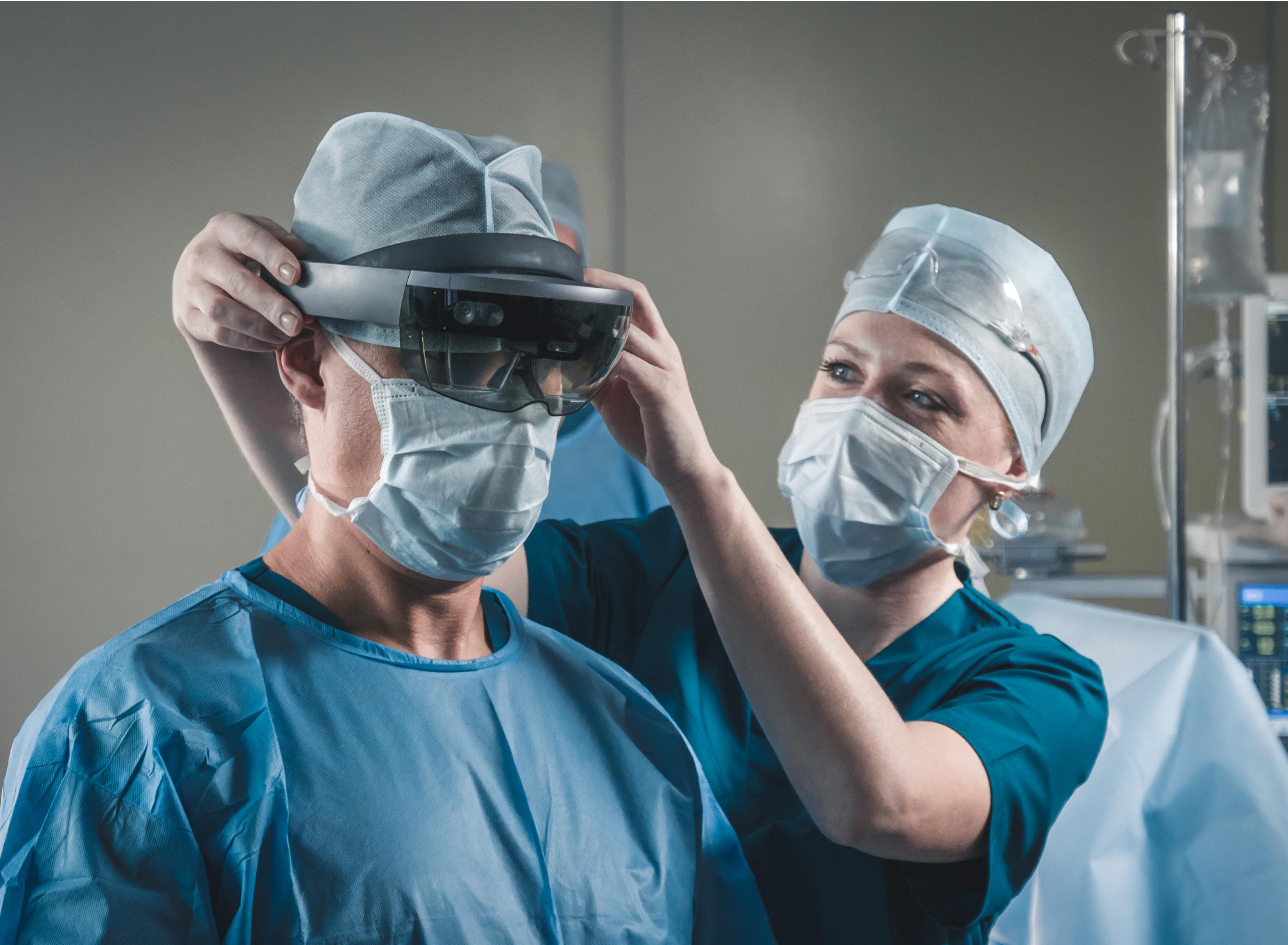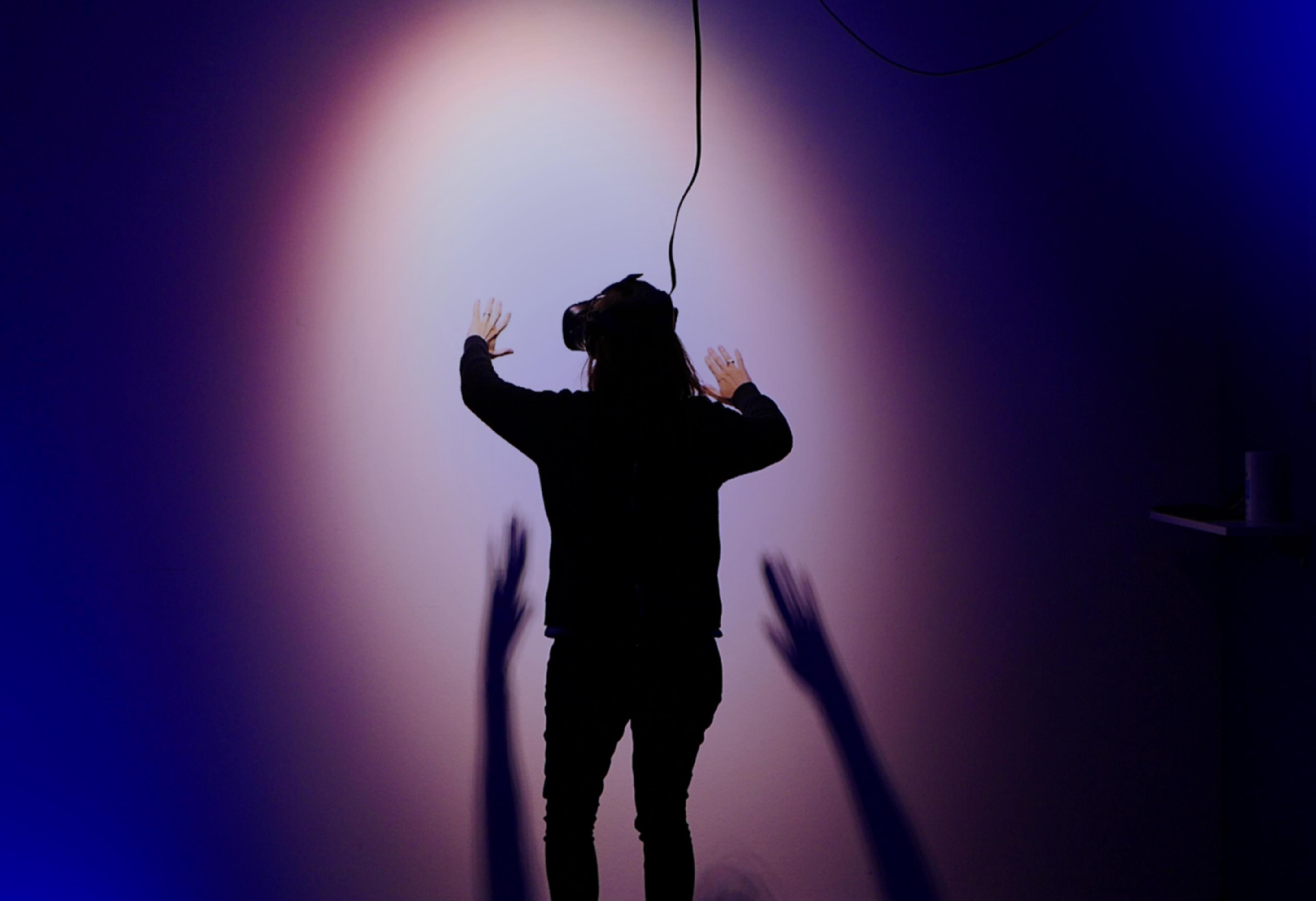
Use cases for augmented reality in healthcare

Augmented reality, or AR, is a technology focused on superimposing digital layers of information on top of actual physical objects or locations—think of that Pokemon Go app craze from a few years back.
But AR can be used for much more than capturing cute cartoon objects in the wild. In the healthcare industry, it can be used in medical training, patient education, to provide assistance on surgeries and other medical procedures, among other use cases.
Innovations in hardware and software have enabled many new and affordable use cases for AR in healthcare, even for small medical offices. AR technology can be used with special headsets, special glasses such as Google Glass, directly with a smartphone or tablet, or with other specialized AR devices.
Let's take a look at some ways AR can be used to facilitate better healthcare in medical schools and offices, as well as in consumer health applications.

AR for medical students and practitioners
For medical practitioners including surgeons and nurses, it's important to get a good understanding of a patient's anatomy before conducting a medical procedure. AR can help them by displaying a visualization of what lies beneath the skin so that they can be more accurate with injections or incisions, or simply displaying the anatomy to gain a better understanding of the human form.
At Case Western University's medical school, for example, students can use Microsoft's Hololens to visualize a giant 3D representation of the human body, and navigate through holographs of different layers of tissue or muscle or bone, helping them familiarize themselves with the anatomy in a way that goes beyond what they’d see in a live procedure.
Nurses can use AR hand-held scanner technology to display their patient’s veins, so that they can easily find the vein when drawing blood or giving a shot. That helps save time in finding a vein, and ensures that patients are comfortable during the process.
Surgeons can use AR to essentially develop X-ray vision. By wearing AR headsets with eye displays that project images of the patient's internal anatomy based on CT scans, they're able to gain much better context on the underlying anatomy. At Johns Hopkins, neurosurgeons have used this technology when placing screws in a patient’s spine for a spinal fusion, as well as removing a cancerous tumor from another patient’s spine.
"When using augmented reality in the operating room, it's like having a GPS navigator in front of your eyes in a natural way so you don’t have to look at a separate screen to see your patient's CT scan," says Timothy Witham, M.D., director of the Johns Hopkins Neurosurgery Spinal Fusion Laboratory and professor of neurosurgery at the Johns Hopkins University School of Medicine.
AR has also proved beneficial in helping doctors scale down their teams to limit potential exposure to COVID-19. Imperial College Healthcare NHS Trust used Microsoft HoloLens 2 and Dynamics 365 Remote Assist to give doctors access to hands-free video consultations with other specialists during procedures, and enabling them to view medical notes and X-rays directly in their field of view.
"What it means is that you have all the information, all the specialist care you need at the patient's bedside there and then – and it's all in one headset," said Dr. James Kinross, surgeon and senior lecturer at Imperial College.
While the technology is still novel, it’s likely that medical schools offices around the world will see the benefits of AR-supported surgeries and other medical procedures. AR offers access to deep insights to patient medical data and anatomical information that medical practitioners and students can learn from and rely on during their procedures. It’s an affordable, convenient way to get "x-ray vision" that will help them optimize their performance at the task at hand.

AR for patient care and education
AR can also provide a lot of benefits on the patient side as well.
For example, in a Google Glass trial with the Australian Breastfeeding Association, nursing mothers were asked to wear Google Glass while consulting with virtual lactation consultants. The consultants were able to see exactly what the mothers were seeing, and offer valuable feedback and advice to help improve their nursing sessions—and the mothers never had to put their babies down to do it.
Patients can also get a better understanding of drug interactions with their bodies, by using an app that scans the drugstore shelves to create alerts of which OTC drugs would have negative interactions based on which prescription medications they're already taking. The app available from Cigna can be used to help patients improve peace of mind, avoid adverse reactions, and increase the effectiveness of their medication.
Finally, AR can be used to incentivize consumers to take better care of their health by gamifying their exercise routine. Pokemon Go and similar apps like Ghostbusters World give individuals a fun and unique experience when they get moving, helping them to get more walking or running into their daily routine.
The market for augmented reality in healthcare is currently growing at a compound annual growth rate of 32.9%. As hardware and app developers continue to produce affordable AR technology, and medical practitioners, educators, and consumers realize the value of their use cases, we're likely to see AR become a bigger part of our experience with healthcare, both at home and at the doctor’s office or OR.





